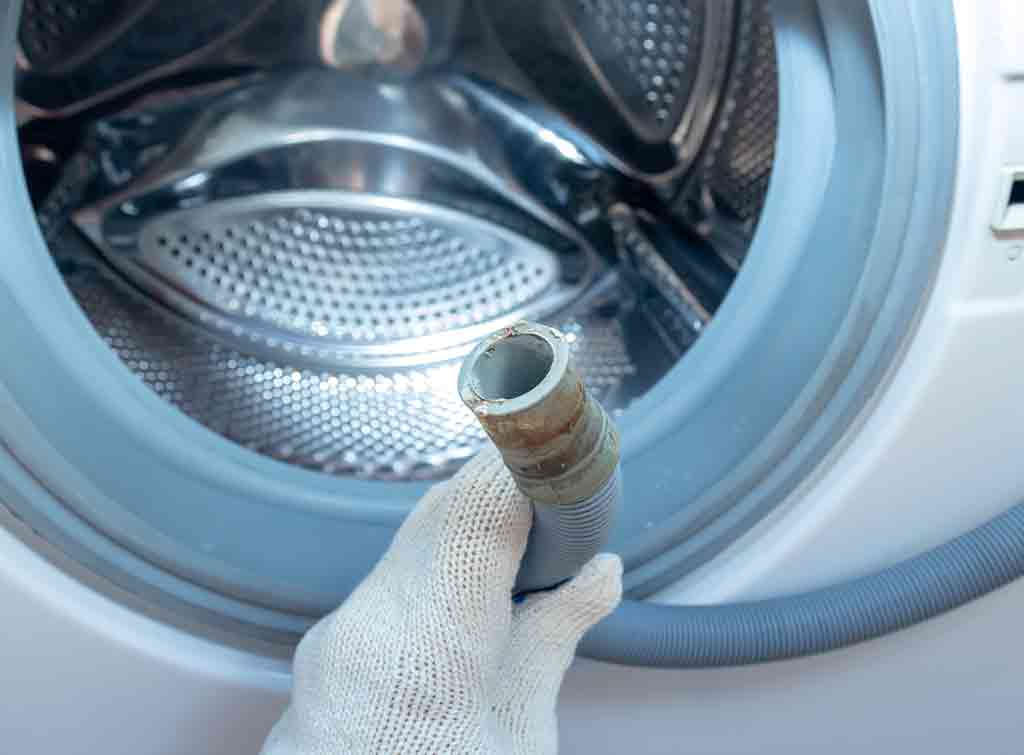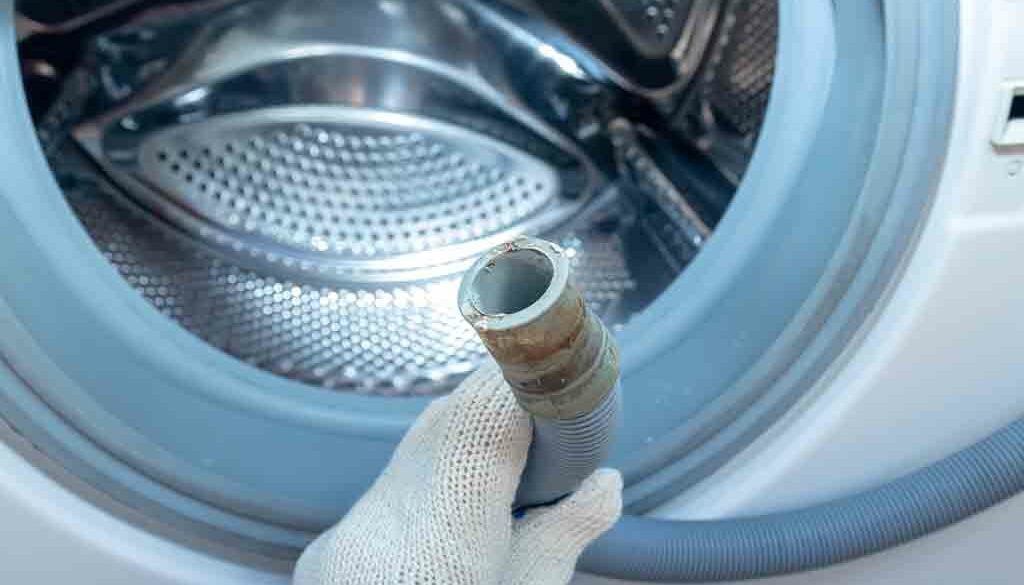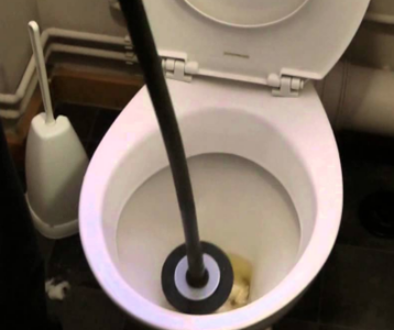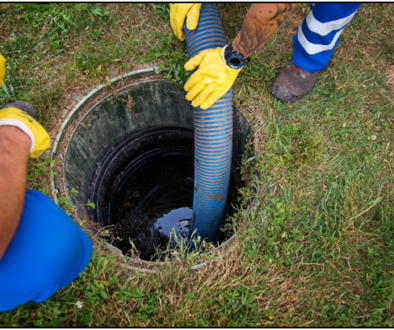How To Use Drain Unblocker In Washing Machine
So, you’re dealing with a blocked drain in your washing machine, huh? Don’t worry, we’ve got your back! In this quick guide, we’ll show you how to use a drain unblocker to clear that pesky blockage and get your machine running smoothly again.
Using a drain unblocker in a washing machine may sound intimidating, but trust us, it’s easier than you think. With just a few simple steps, you’ll have that drain flowing freely in no time. So let’s roll up our sleeves and get to work!
Here’s the deal – a drain unblocker is a powerful tool that can dissolve the gunk and debris that’s causing the blockage in your washing machine. By following our step-by-step instructions, you’ll be able to use this magic potion to clear the blockage and get your machine back to its squeaky-clean best. Stick around, and we’ll show you how it’s done!
- Start by wearing protective gloves to avoid any skin contact.
- Remove any standing water from the washing machine drum.
- Pour the recommended amount of drain unblocker into the detergent dispenser.
- Choose a hot water cycle and run the washing machine without any clothes.
- Once the cycle is complete, run a rinse cycle to remove any residue.
- Inspect the drain to ensure it is unblocked, and repeat the process if necessary.

How to Use Drain Unblocker in Washing Machine: A Step-by-Step Guide
Having a blocked drain in your washing machine can be a major inconvenience, causing water to back up and potentially damage your appliance. Fortunately, using a drain unblocker can help you resolve this issue quickly and effectively. In this article, we will provide you with a step-by-step guide on how to use drain unblocker in a washing machine, ensuring that you can keep your appliance running smoothly.
Step 1: Prepare the Necessary Tools
Before you begin, gather the necessary tools and materials to use the drain unblocker. You will need a pair of rubber gloves to protect your hands, a bucket or towel to catch any excess water, and a bottle of drain unblocker specifically designed for use in washing machines. Make sure to carefully read the instructions on the bottle to understand the dosage and usage guidelines.
It’s important to note that drain unblockers typically contain strong chemicals, so it’s essential to take precautions to protect yourself and your appliance. Make sure the area is well-ventilated and avoid inhaling the fumes. Keep children and pets away from the area during the process.
Step 2: Identify the Drain and Remove Any Obstructions
Locate the drain pipe behind or beneath your washing machine. It is usually a flexible tube that connects to the plumbing system. Inspect the outside of the drain pipe for any visible obstructions. You may find lint, debris, or small objects that may be causing the blockage. Carefully remove these obstructions by hand, taking care not to damage the pipe.
If the blockage is not visible from the outside, you may need to detach the drain pipe from the washing machine to access the blockage. Refer to your washing machine’s user manual for specific instructions on how to remove the drain pipe.
Step 3: Pour the Drain Unblocker Into the Pipe
Once you have cleared any visible obstructions, it’s time to use the drain unblocker. Follow the instructions on the bottle carefully to determine the appropriate amount to use. In most cases, you will need to pour the drain unblocker directly into the drain pipe.
Slowly pour the recommended amount of drain unblocker into the pipe, taking care not to spill any onto the washing machine or surrounding surfaces. Avoid contact with your skin and eyes, as the chemicals can cause irritation. Use a funnel if necessary to ensure accurate pouring.
Additional Tips for Using Drain Unblocker in a Washing Machine
Aside from following the step-by-step guide above, there are a few additional tips that can help you effectively use drain unblocker in your washing machine:
1. Regular Maintenance:
Prevention is always better than a cure. To avoid major blockages, it’s essential to perform regular maintenance on your washing machine. Clean the filter regularly to remove any lint or debris that could accumulate and cause blockages. Additionally, be mindful of what you put in the machine, such as small objects that might block the drain.
2. Use Natural Alternatives:
If you prefer to avoid chemical drain unblockers, you can explore natural alternatives. Baking soda and vinegar can be used as a natural drain unblocker. Mix a cup of baking soda with a cup of vinegar and pour it down the drain pipe. Let it sit for a few hours before flushing it out with hot water.
3. Seek Professional Help:
If you have tried using a drain unblocker and the issue persists, it might be time to seek professional help. A professional plumber will have the expertise and tools to properly identify and resolve any complex drain blockages in your washing machine.
By following these steps and tips, you can effectively use drain unblocker in your washing machine and prevent the inconvenience of blocked drains. Remember to always read and follow the instructions on the product labels and prioritize safety throughout the process.
Key Takeaways: How to Use Drain Unblocker in Washing Machine
- Remove any standing water from the washing machine before using the drain unblocker.
- Pour the recommended amount of drain unblocker solution directly into the machine’s drain.
- Wait for the suggested amount of time for the solution to work its magic.
- Flush the drain with hot water to clear out any blockages.
- Run a quick cycle with an empty load to ensure the drain is fully cleared and functioning properly.
Frequently Asked Questions
Getting a drain unblocker for your washing machine can be a lifesaver when dealing with clogs. Here are some common questions and answers to help you effectively use a drain unblocker.
Q: What is a drain unblocker, and how does it work?
A: A drain unblocker is a chemical solution designed to dissolve clogs and clear drains. It typically contains powerful ingredients that break down organic materials, such as hair, grease, and soap scum. When the drain unblocker is poured into the washing machine’s drain, it reacts with the blockage, dissolving it and allowing water to flow freely again.
It’s important to follow the instructions on the drain unblocker carefully, as different brands and formulations may have specific usage guidelines. Always wear protective gloves and avoid inhaling the fumes, as drain unblocker chemicals can be harmful if not used correctly.
Q: How often should I use a drain unblocker in my washing machine?
A: The frequency of using a drain unblocker depends on the severity of the blockage and the usage of the washing machine. If you notice slow drainage or recurring clogs, it’s a good idea to use a drain unblocker. However, it’s important not to rely solely on drain unblocker chemicals for maintenance.
Regular preventative measures, such as avoiding dumping excess food particles, lint, or large objects down the drain, can help reduce the occurrence of blockages. Additionally, periodic cleaning of the drain and filter can also prevent blocks and maintain the efficiency of your washing machine.
Q: Can I use a drain unblocker in an eco-friendly or septic system?
A: Not all drain unblocker products are safe to use in eco-friendly or septic systems. Some drain unblockers contain harsh chemicals that can harm the beneficial bacteria in these systems. It is important to look for eco-friendly or septic system-safe drain unblocker options, which are specifically formulated to be safe for these systems.
These eco-friendly or septic system-safe drain unblockers typically use enzyme-based or biodegradable formulas that effectively unblock drains without harming the environment or disrupting the balance of the septic system. Always check the labels or product descriptions to ensure it is safe for your specific system.
Q: How long should I wait after using a drain unblocker before running the washing machine again?
A: The waiting time after using a drain unblocker before using the washing machine again varies depending on the product and the severity of the blockage. Some drain unblockers work instantly, while others may require a longer contact time to fully dissolve the blockage.
It is best to carefully read the instructions on the drain unblocker label to determine the appropriate waiting time. Generally, it is recommended to wait at least a few hours or overnight to allow the drain unblocker to work effectively before using the washing machine again.
Q: Can I prevent drain clogs in the washing machine without using a drain unblocker?
A: While using a drain unblocker can be effective in clearing blockages, there are several preventive measures you can take to minimize the occurrence of drain blocks in your washing machine.
Firstly, empty pockets before washing to avoid small objects getting lodged in the drain. Secondly, use a laundry bag or mesh lint trap to catch lint and debris, preventing them from accumulating in the drain. Lastly, perform regular maintenance by cleaning the drain and filter to remove any buildup. These practices can help keep your washing machine drain clear and reduce the need for using a drain unblocker.
Summary
Using drain unblocker in your washing machine can help remove blockages and keep it running smoothly. First, make sure to check the manufacturer’s instructions to ensure compatibility. Then, determine the type of blockage and use an appropriate unblocker. Remember to always wear protective gloves, and follow the product’s directions carefully. Additionally, regular maintenance is key to prevent future blockages. Clean filters and drain hoses, and avoid putting large amounts of lint or foreign objects into the machine.
By following these steps, you can effectively use a drain unblocker in your washing machine to prevent blockages and keep it in good working condition. Taking these precautions will help you avoid costly repairs and keep your laundry routine hassle-free.




